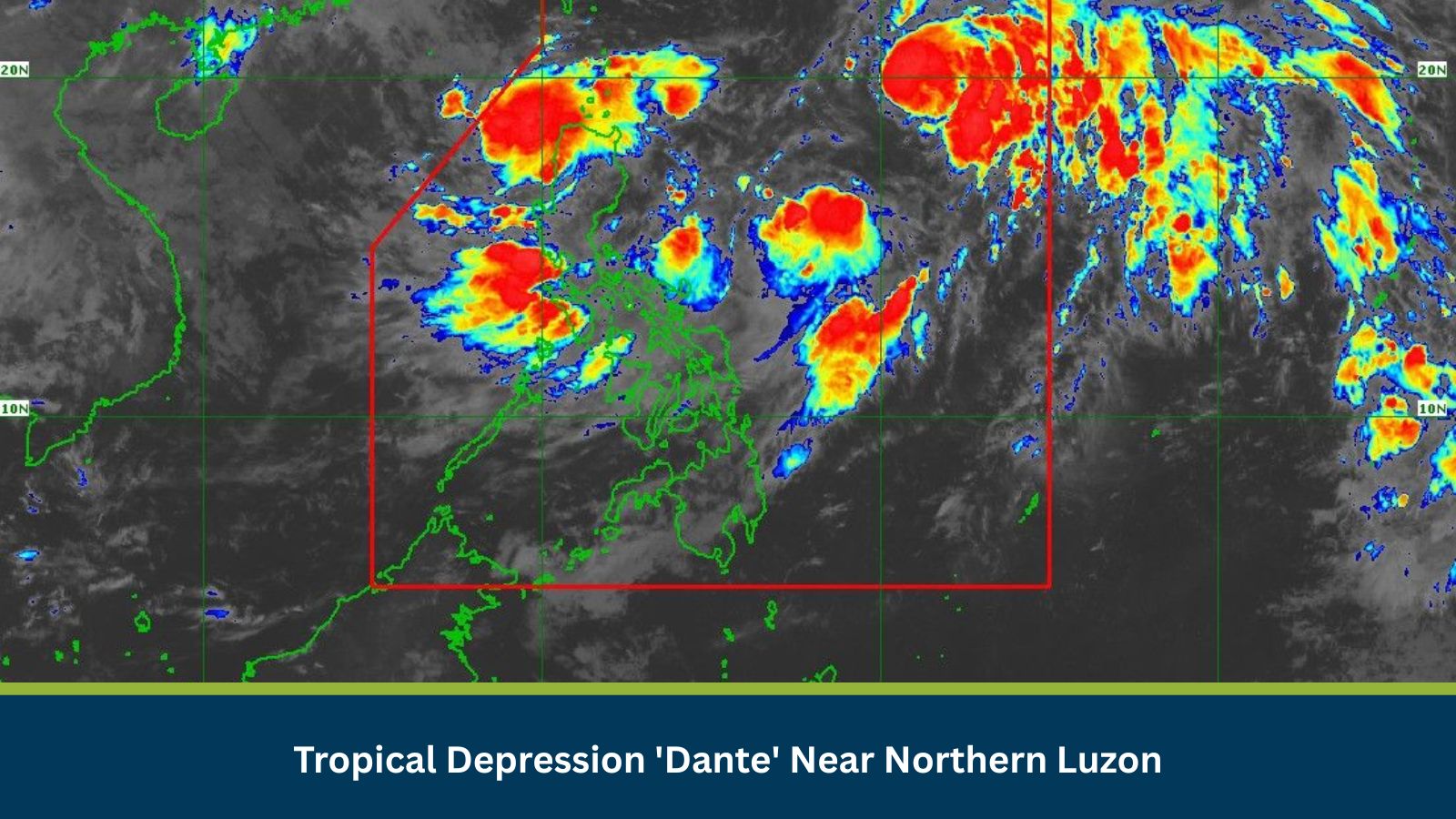This risk assessment provides an update on Tropical Depression ‘Dante,’ which formed near Northern Luzon. It evaluates the potential for localized disruptions, heavy rainfall, and associated hazards, offering insights for business continuity, personnel safety, and operational preparedness.
What is Risk Analysis in the Context of Natural Disasters?
Natural disaster risk assessments evaluate how phenomena like tropical depressions impact human safety, critical infrastructure, business operations, and supply chains. They provide timely intelligence that helps organizations prepare for disruptions, mitigate operational risks, and ensure the welfare of staff and assets.
Executive Summary
- Date of Incident: 22 July 2025
- Location: Ilocos Region, Central Luzon, Calabarzon, Mimaropa, Visayas, Northern Luzon, Metro Manila, Abra, Batanes, Ilocos Norte, Dinagat Islands, Misamis Occidental, Benguet, Camiguin, Zamboanga del Norte, Lanao del Norte, Philippines. Specific highly sensitive areas include Pangasinan (e.g., Dagupan and Calasiao).
- Risk Category: Natural Disasters
- Severity Score: 2/5
- Confidence Level: 88%
Tropical Depression ‘Dante’ has formed near Northern Luzon, posing a moderate risk of localized disruptions and hazards. Based on historical data, a typical tropical depression in this region is expected to bring heavy rainfall, localized flooding, and potential landslides. The likely duration window for significant impact is estimated to be 3-5 days. While ‘Dante’ is currently a depression, the primary concern is the rainfall-induced flooding and landslides, especially in low-lying and mountainous areas of Northern Luzon. The severity is assessed as moderate due to the potential for localized disruption, but not widespread catastrophic damage.
Known Hotspots and Sensitive Areas
Highly sensitive areas include low-lying coastal communities along the Lingayen Gulf, river basins prone to overflow such as the Cagayan River basin (Isabela, Cagayan provinces), Agno River basin (Pangasinan), and the Abra River basin (Abra, Ilocos Sur). Informal settlements along riverbanks and landslide-prone mountainous barangays in Benguet and Ifugao are also highly vulnerable.
Impact on Transportation and Services
- Road Closures: Road closures are anticipated, particularly along low-lying sections of the National Road (N1/N2) connecting Ilocos Region and Cagayan Valley, and provincial roads in flood-prone areas like Pangasinan (e.g., Urdaneta-Dagupan Road, Calasiao-Sta Barbara Road). Mountain passes in the Cordillera Administrative Region, such as sections of Halsema Highway (Baguio-Bontoc Road), may experience temporary closures due to landslides.
- Transport Disruption: Air transport disruptions are likely at airports serving Northern Luzon, including Laoag International Airport (LAO), Tuguegarao Airport (TUG), and San Fernando Airport (SFE), with potential flight delays or cancellations. Sea travel will likely be suspended for smaller vessels and ferries. Public bus services operating along major inter-provincial routes in Northern Luzon may experience delays or cancellations.
- Utility Damage: Power outages are expected due to strong winds toppling electric posts and lines, particularly in rural areas of Ilocos Norte, Cagayan, and Isabela. Water supply may be temporarily affected by flooding, leading to contamination or disruptions in pumping stations. Communication lines might experience temporary service interruptions.
- Business Operations: Localized disruptions due to temporary power outages, reduced foot traffic, and accessibility issues are expected, impacting small to medium enterprises.
Recommended Actions
- Activate the company’s Business Continuity Plan (BCP) and Crisis Management Team immediately. Implement flexible work arrangements, such as mandatory work-from-home for non-essential personnel, and provide clear safety directives for those required on-site.
- Execute pre-impact asset protection protocols, including securing all outdoor equipment, clearing drainage systems to prevent flooding, and elevating critical machinery or inventory. Verify the functionality of backup power generators, UPS systems, and redundant data backup solutions, ensuring adequate fuel reserves.
- Proactively communicate with key suppliers, logistics partners, and clients regarding potential disruptions. Assess and activate alternative supply routes or transport modes for critical raw materials and finished goods, and consider pre-positioning essential inventory.
Emergency Contacts
- Police: 117 or 911
- Fire Department: 112 or 911
- Ambulance: 112 or 911
- National Emergency: 911
- Official Government Websites:
- Philippine Atmospheric, Geophysical and Astronomical Services Administration (PAGASA): +63289291113
- National Disaster Risk Reduction and Management Council (NDRRMC): +63289111406
- Department of Social Welfare and Development (DSWD): +63289318101
Final Thoughts
The baseline scenario anticipates Tropical Depression ‘Dante’ bringing localized moderate to heavy rainfall with temporary flooding and minor landslides, resulting in minimal impact on major infrastructure. However, a moderate escalation could see ‘Dante’ intensify into a Tropical Storm, leading to widespread and prolonged heavy rainfall, significant riverine flooding, and broader infrastructure disruption. In a severe escalation, ‘Dante’ could unexpectedly intensify into a Typhoon, causing catastrophic flooding, severe landslides, and extensive structural damage across Northern Luzon, potentially leading to a humanitarian crisis. Businesses should implement proactive measures to ensure employee safety, protect assets, and maintain supply chain resilience.
Stay ahead of operational risks with real-time alerts, scenario modeling, and expert advisories
MitKat helps organisations navigate uncertain times by providing comprehensive insights about the evolving risk landscape. We offer various services including Risk consulting and Security Design, Protective Services, and cyber security services which ensure organisations become Risk Intelligent. Our AI-powered operational risk monitoring tool, datasurfr combined with expert insight enables companies to stay abreast of evolving operational risks and emerging developments.






